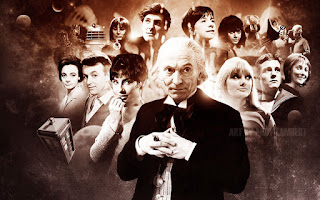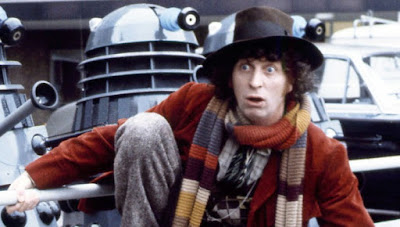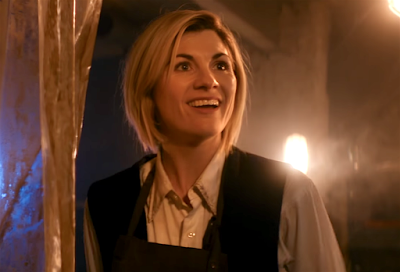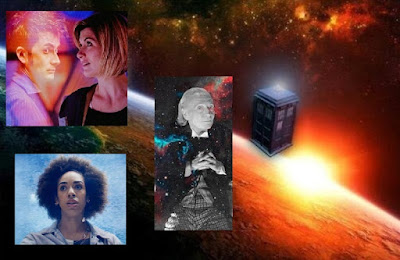Doctor Who: British TV Series, International Sensation
This TV show has been around since 1963. It started out as a black-and-white educational kids show that taught about history and science, but adults watched the show as well. Many people grew up watching the shows all over the world. In the U.S., the episodes were often shown on local PBS stations. It was one of the first successful British scifi shows, the most successful, and is the longest running scifi series of all time. Video: Doctor Who Basics Explained
The Doctor, the hero of the show, is a Time Lord, which means he can travel through space and time in his ship , the T.A.R.D.I.S. He looks human, but he is an alien from the planet Gallifrey. The outside of the ship looks like a blue British Police box, "which was a common sight in Britain in 1963 when the series first aired." The Doctor travels around to help people in need, to save civilizations and to combat foes. He has some companions who travel with him. The Doctor is very smart and powerful. He doesn't need a weapon, aside from his intellect and his sonic screwdriver. In face, The Doctor doesn't like guns. His famous alien enemies include the Daleks, The Master, and the Cybermen. Video: Companions
It was originally a serialized story in multiple parts. After the first series ended in 1989, they started it up again in 2005. The new series is not generally shown in multiple parts. They've had several specials and movies as well as the regular series. Video: Every Doctor Who Serial 1963-2013
Jon Pertwee (whom I met in 1986 at I-Con) played The Doctor after that for four years (into the 1970's). His son, Sean Pertwee, followed in his acting footsteps. He plays Alfred on the "Gotham" series on FOX and also played Inspector Lestrade in "Elementary" on CBS. Video: The Second Doctor meets the Third Doctor
The fourth Doctor, Tom Baker, was very popular. He was the first young-looking Doctor. He played The Doctor for 7 years (longer than any other actor). Peter Davison was only 29 when he started playing The Doctor, and he continued on for three years. Colin Baker was the Sixth Doctor and only lasted for two years. The series went on a long hiatus during this time because the head of the BBC didn't like the show. Scottish actor Sylvester McCoy was the last Doctor of the original run, from 1987 to 1989. Never officially canceled, low ratings convinced the BBC not to continue the show. Other than an American "Doctor Who" film in 1996, the show did not air again until 2005. Video: Iconic Quotes & Humorous Moments of The Fourth Doctor
Each time The Doctor regenerates, not only does he look different, but he has different mannerisms or quirks, and a different style of dress. Some of the Doctors wear bow ties. Some like wearing a fez on occasion. The Seventh Doctor had a long knitted scarf. The Sixth Doctor wore very colorful, clashing clothes. Some are very old and authoritative. Some are young and rebellious. Some are high energy; almost manic. Video: 13 Doctors Ranked From Worst To Best
The series ran for years in re-runs all over the world. Like the original "Star Trek" series, it grew in popularity through the re-runs, novels and fanzines.The show has been shown internationally since 1964. The modern series is shown in more than 50 countries. It's "one of the five top-grossing titles for BBC Worldwide." In the U.S., it now airs on BBC America. Fans of the series are called "Whovians." Video: 2 Doctors Meet Their Craziest Fans
Christopher Eccleston portrayed the first Doctor of the new series (technically, the ninth Doctor). He was fantastic but left after one year. The new show is much faster paced, and has great writing and better production values. David Tennant (my favorite), another Scotsman, took over and played The Doctor for five years. He is a successful actor who's appeared in many TV series and movies since. I was thrilled to interview him over the phone in 2014. All of the new Doctors are far sexier than their previous incarnations, which probably reflects the changes in TV, and society in general, between the 1980's and the 21st century. Video: The Doctor Being Sassy
Tennant was replaced by Matt Smith, the youngest Doctor at 26, who played him for three years. Peter Capaldi (yet another Scottish actor) then played The Doctor for three years. He was considerably older than the previous modern Doctors, at 55. To me, he seemed even older than that. He played The Doctor as a very dour man who rarely smiled or laughed. The best thing about Tennant and Smith was the pure joy they brought to the role, as well as the youthful energy. The stories were fine, and Capaldi's acting was good, but he just didn't impress me as much as the others. Video: Peter Capaldi Acting for 26 Minutes Straight
The latest Doctor, 35-year-old Jodie Whittaker, is the Thirteenth - and first female - Doctor. She was previously known to audiences for her role in the great British drama series "Broadchurch." She is very popular with most fans since taking over the role in 2017 and returns in 2020. Video: Interview with Jodie Whittaker
Although "Doctor Who" has always done social and political commentary, the recent series does "explore racism, sexism, war and colonialism for a family audience." While some fanboys object to having a female Doctor or having episodes that address racism and other social evils, most fans welcome both the latest Doctor and the socially relevant stories. The writing in the series faltered a bit after Davies left, in my opinion, but it's back on track with new Executive Producer Chris Chibnall and his staff of writers. Video: Series 11 Trailer #2
I love "Doctor Who" because the characters are interesting and likeable; the shows are thrilling and have lots of action; the dialogue is often very funny; and the show surprises me most of the time. Not only do the plots surprise me, but they often make me gasp in wonderment or laugh gleefully like a child. It gives me chills and makes me weep with geeky enjoyment. Video: The Eleventh Doctor is a Badass















No comments:
Post a Comment